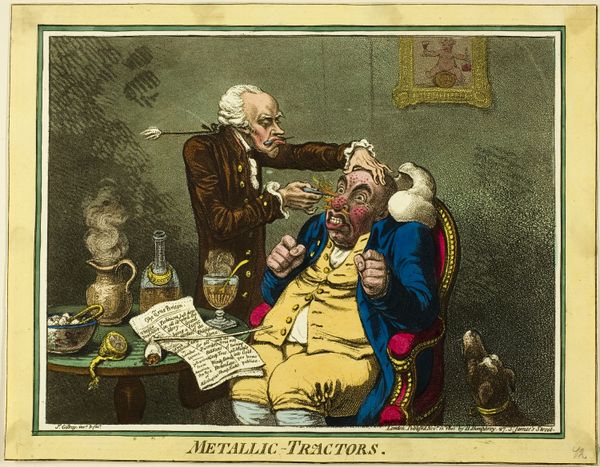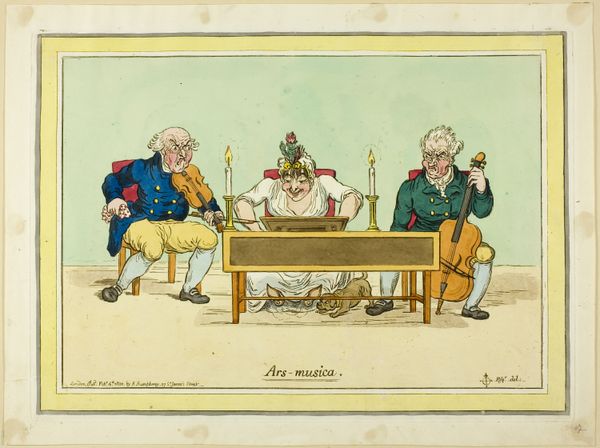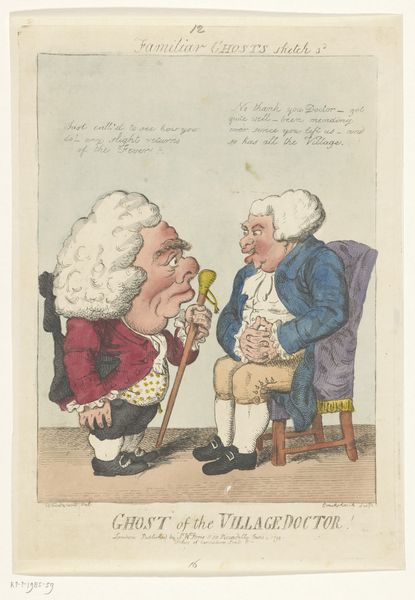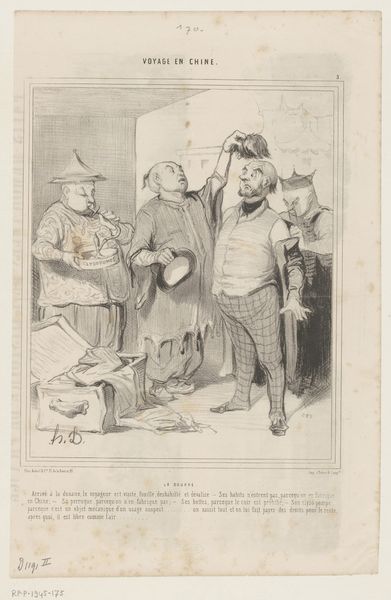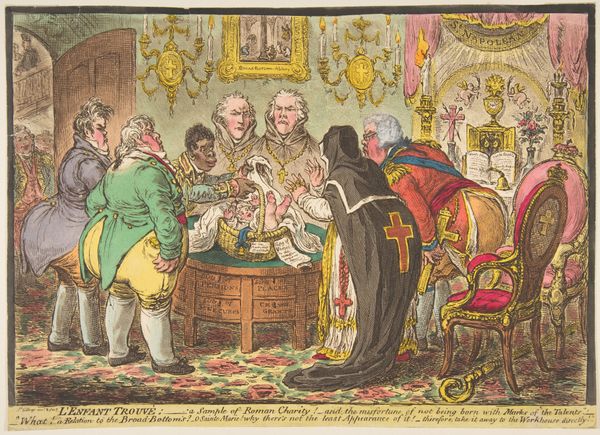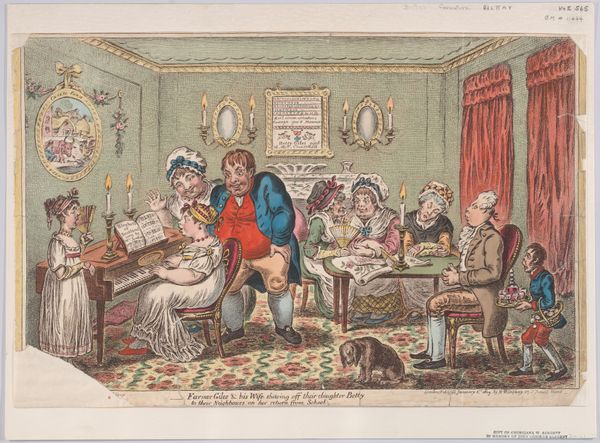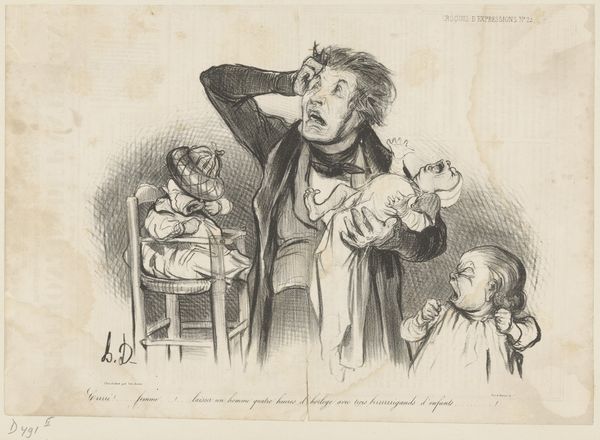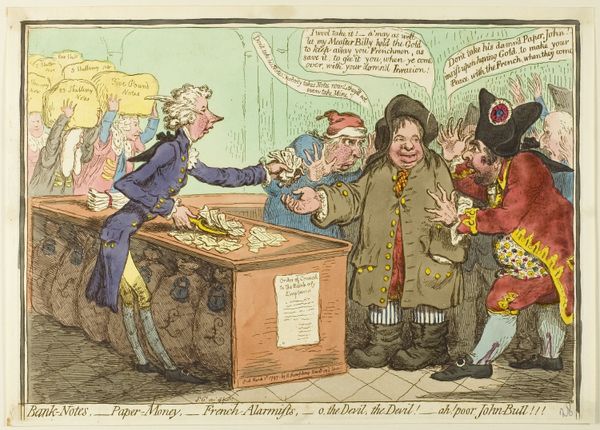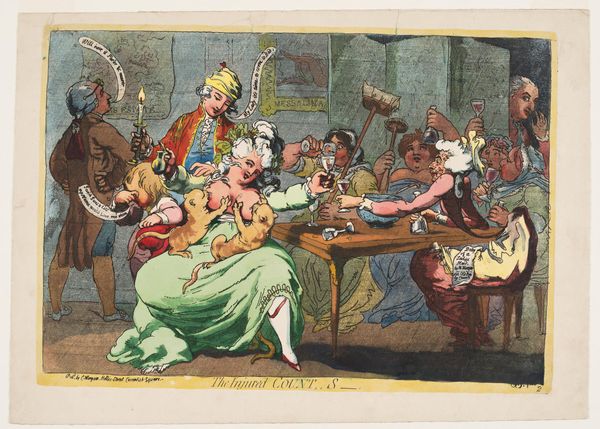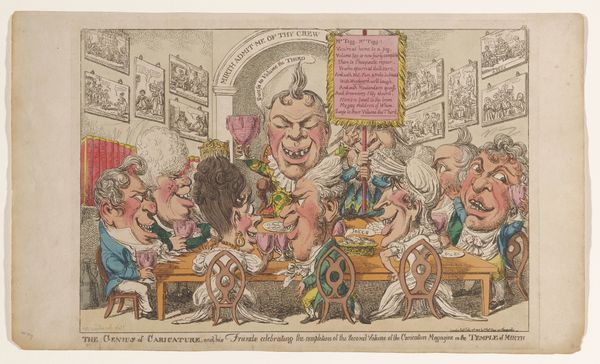
drawing, coloured-pencil, print, etching
#
drawing
#
coloured-pencil
# print
#
etching
#
caricature
#
dog
#
caricature
#
coloured pencil
#
romanticism
#
men
#
watercolor
Dimensions: plate: 6 7/8 x 8 15/16 in. (17.5 x 22.7 cm) sheet: 8 1/16 x 9 15/16 in. (20.5 x 25.2 cm)
Copyright: Public Domain
Editor: This etching and coloured pencil print, "Metallic Tractors" by James Gillray from 1803, is unsettling. There's something quite aggressive in the depiction of the doctor "operating" on the patient. How do you interpret this work? Curator: It is definitely meant to be unsettling! Gillray was a master of political caricature, and this print satirizes the medical quackery of the time, specifically Elisha Perkins’ "Metallic Tractors." But let's consider it more broadly. What societal anxieties do you think Gillray is tapping into here? Editor: Well, the patient looks absolutely terrified, like he's being attacked rather than healed. Was this about anxieties surrounding the elite taking advantage of common people? Curator: Precisely. Look at the dog – often a symbol of loyalty – seemingly unimpressed by the spectacle. Consider the social and economic context: England was on the cusp of industrialization, and there was growing distrust of the upper classes. Gillray uses the guise of medical satire to critique a broader system of exploitation and deception. Notice also the “Bone Breeches” list on the table: Who are the likely intended targets of Gillray’s social critique? Editor: Ah, so the print works on multiple levels – critiquing not just Perkins' invention but also societal power structures? I never considered how the image's cruelty served a deeper social commentary. Curator: Exactly. And by highlighting the grotesque, Gillray forces his audience to confront uncomfortable truths about class, power, and the vulnerabilities of the human body in a time of rapid change. What seemed at first to be an amusing image is actually a biting commentary. Editor: Thank you, I'll never look at a caricature the same way! Curator: That’s wonderful. By contextualizing art within its historical and social framework, we reveal the work's complex layers and the many cultural meanings.
Comments
No comments
Be the first to comment and join the conversation on the ultimate creative platform.
